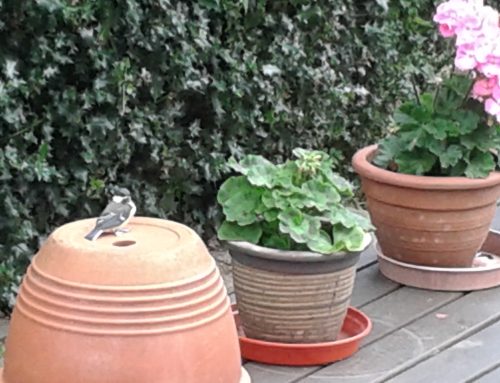
This is the last part of the talk given, oh over a month ago, to the Contemporary Theology Group in Canterbury. Where did that month go? Well, I’ve been to Cornwall and back, to Bristol and many other places in my head, connected especially with turning 50, and apologise for this long hiatus Normal service will be resumed!
I mentioned in the last post that alongside the rather minority interest in contemporary poetry in book form, there are single poems that circulate virally, often passed from hand-to-hand, shared privately or cut out from newspapers and stuck on fridges or pin-boards. These poems often become detached from their writers.
An interesting example is ‘Do not stand at my grave and weep’ It was written in 1932 by Mary Frye who never published it but circulated it privately. It’s been attributed to Native Americans, a soldier who died in Northern Ireland and appears in anthologies under the name of that prolific writer ‘Anonymous’. It’s popular at funerals and in 1995 received 30,000 votes in a BBC poll. It may not be a literary poem but it has a unique ability to soothe. Its simple, uplifting message is couched in images from the natural world, with easy to remember short rhyming lines.
This brings me back to Truro Cathedral I referred to in my first post from this talk, and the fragile space created by the stories of spiritual and faith journeys. A simple poem like ‘Do not stand at my grave …’ can, to someone tolerant of complexity and ambivalence, seem like ‘Chicken Soup for the Soul’, facile or even saccherine. Sometimes, though, particularly say, after a bereavement or at a funeral, chicken soup is what we want – a direct comforting, unambiguous message. But at a time of spiritual strength and curiosity, people tend to look to poems that are what could be called ‘richly ambiguous’ in that they permit different readings.
Another favourite poem, also in simple language and regular rhyme scheme is Robert Frost’s Stopping by Woods. This poem though, doesn’t tell the reader what to think and the whole gist is richly ambiguous. ‘The woods’ can conjure any number of human circumstances and the desire to linger and the need to go, reflect many human dilemmas.
Working with it therapeutically, I’ve observed this ostensibly simple poem read through the lens of, variously, depression, addiction, marriage, aging, being a carer, a prisoner, any kind of professional position. The account of stopping by woods can be a metaphor for life’s challenges, spiritual and otherwise and yet something about the form of the poem is still consoling, even though it gives no direct answer.
This brings me to the last of the connections I’d like to make between poetry and spirituality – that of metaphor – like the woods in the above poem. Just as the parables in the gospels describe one thing in the form of another, a metaphorical poem allows multiple meanings.
There’s a short poem by British poet Vicki Feaver, called simply ‘Coat’ that has one straight forward metaphor. Many readings, such as that in the link given, assume the ‘you’ that is being addressed is a lover. The poem, though, I think could be ‘about’ religion – or many other things. Like Dennis O’Driscoll’s Missing God, it’s a poem about absence and loss, and yet, paradoxically, the poem reclaims that which is lost through its ability to tell the truth concisely and beautifully.









